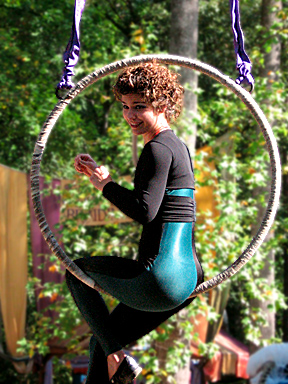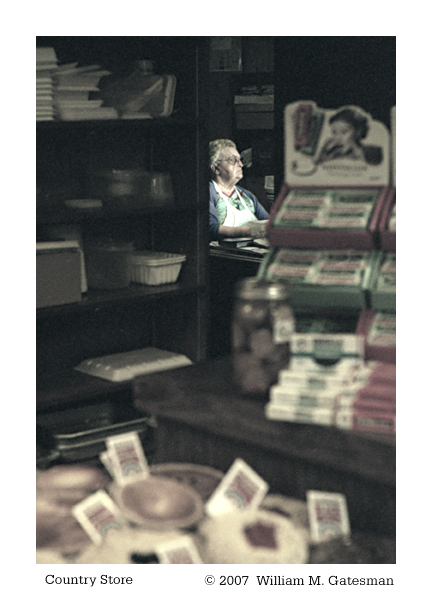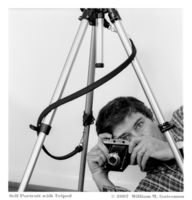Depth of Field in a Digital World
November 11, 2007 Technical IssuesOne may surmise by looking at my Photo Gallery that I pay close attention to depth of field when taking photographs. Depth of field is the technical phenomenon that causes some parts of a photograph to be in focus and some to be out of focus. Depth of field traditionally has been caused by the relationship of the lens aperture (the size of the hole that lets light into the camera) and the size of the film. The larger the piece of film, the shorter the depth of field (meaning more of the image will be out of focus). That is why large format view cameras tend to produce images with a short depth of field at many aperture settings. As the film one uses gets smaller in size more of the image is in focus. Hence, 35mm cameras allow for a more in focus image than medium and large format cameras.
I took the photograph above, Country Store, with a 35mm film camera. I was able to set the film camera so that my subject, the woman in the back room, is in focus, and everything else in the foreground is out of focus. In my view, this short depth of field which empasizes certain elements of the image makes a much more interesting photograph than if everything was in focus. Country Store is featured in the Travel Portraits gallery at www.wmgphoto.com
To learn about the challenge of creating a short depth of field using a digital camera, click here ——>
 In the Renaissance Acrobat Image shown here (which I shot at the 2007 Maryland Renaissance Festival), it appears that the depth of field created by the camera put the subject in focus and the background out of focus. Such is not the case, however. The problem is that I shot this photograph with a digital 35mm camera, and digital 35mm cameras (with only a few exceptions) have image sensors (i.e. the “film” of the digital world) that are smaller than a regular 35mm piece of film. Consequently, try as I might, I cannot set this camera to give me a short depth of field.
In the Renaissance Acrobat Image shown here (which I shot at the 2007 Maryland Renaissance Festival), it appears that the depth of field created by the camera put the subject in focus and the background out of focus. Such is not the case, however. The problem is that I shot this photograph with a digital 35mm camera, and digital 35mm cameras (with only a few exceptions) have image sensors (i.e. the “film” of the digital world) that are smaller than a regular 35mm piece of film. Consequently, try as I might, I cannot set this camera to give me a short depth of field.
In this photograph straight out of the camera both the foreground and the background were in focus, and the background was so busy that it overwhelmed the subject. In that form, this was not a very interesting photograph. Fortunately, I was able to isolate the foreground and apply a photoshop filter to the background to reproduce the guassian blur that would have occured had I been able to set the camera to give me a short depth of field.
This post-production digital manipulation was a tedious process, and I much prefer to set up the camera to give me the depth of field I desire.


